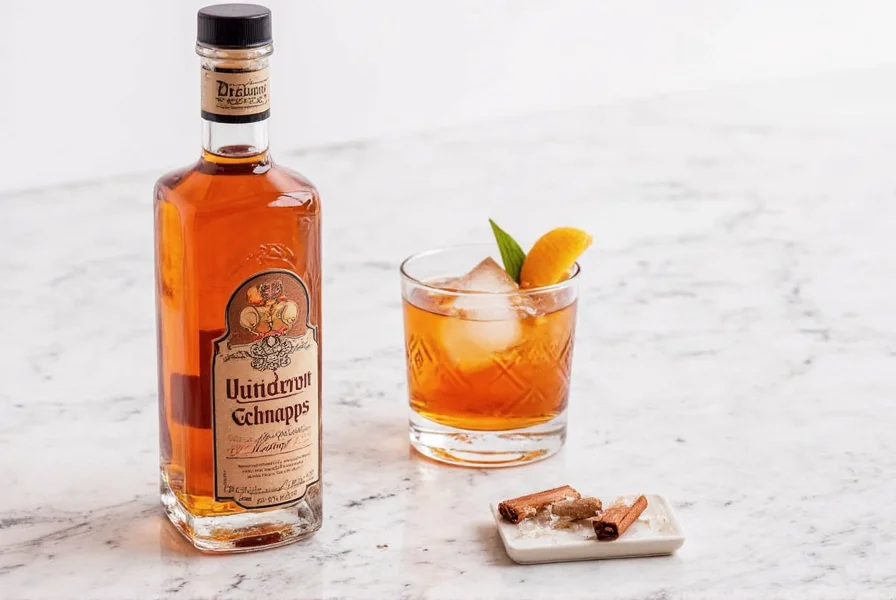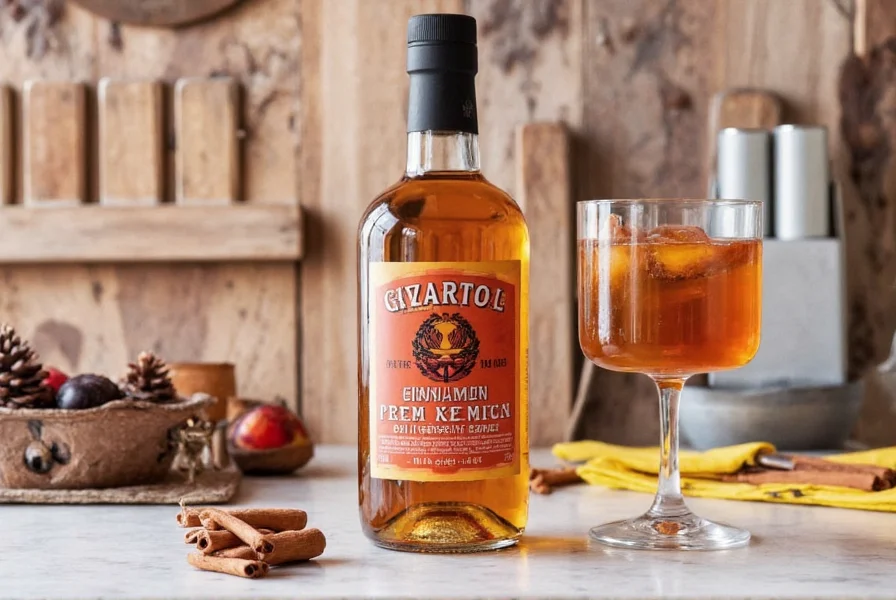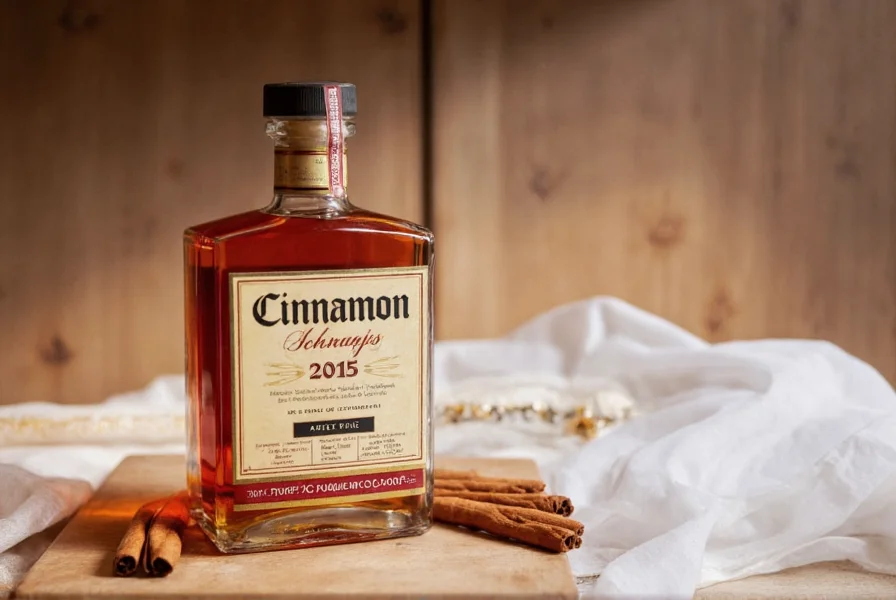Understanding what cinnamon schnapps brings to your bar requires examining its composition, history, and practical applications. This distinctive spirit has evolved from traditional European recipes to become a staple in modern mixology, offering bartenders and home enthusiasts a versatile ingredient for creating balanced, flavorful drinks.
Origins and Historical Development
The term "schnapps" derives from the German word "schnaps," meaning a strong alcoholic drink. Traditional European schnapps production dates back centuries, with regional variations across Germany, Austria, and the Netherlands. Early versions were often fruit-based, but spice-infused varieties like cinnamon schnapps gained popularity as distillation techniques improved.
Unlike authentic German schnapps which typically refers to fruit brandies, American-style cinnamon schnapps emerged as a distinct category in the late 20th century. This evolution reflects changing consumer preferences for sweeter, more approachable liqueurs that maintain recognizable spice characteristics without overwhelming heat.

Production Process and Composition
Modern cinnamon schnapps production typically follows these steps:
| Production Stage | Key Elements | Duration |
|---|---|---|
| Base Spirit Selection | Neutral grain spirit (sometimes potato or molasses-based) | N/A |
| Flavor Infusion | Cinnamon bark, cassia, or natural/artificial flavorings | Days to weeks |
| Sweetening | Sugar syrup (typically 25-35% sugar content) | During blending |
| Filtering & Bottling | Carbon filtration, dilution to target ABV | Final stage |
The precise balance of cinnamon varieties (Ceylon vs. Cassia), sugar content, and additional flavor components creates significant variation between brands. Higher-quality products typically use natural cinnamon extracts rather than artificial flavorings, resulting in more complex flavor profiles with less harsh aftertaste.
Flavor Profile Analysis
Cinnamon schnapps delivers a distinctive sensory experience characterized by:
- Sweetness level: Moderate to high (25-35 grams of sugar per 100ml)
- Spice intensity: Noticeable cinnamon warmth without overwhelming burn
- Supporting notes: Often includes vanilla, citrus, or subtle woody undertones
- Mouthfeel: Smooth, slightly viscous texture from sugar content
- Finish: Medium-length with lingering cinnamon flavor
When evaluating quality, look for balanced sweetness that complements rather than masks the cinnamon flavor. Premium varieties demonstrate layered complexity with evolving flavor notes rather than a single-dimensional taste.
Cinnamon Schnapps vs. Similar Spirits
Many consumers confuse cinnamon schnapps with other cinnamon-flavored spirits. Understanding these distinctions helps in selecting appropriate products for specific uses:
- Cinnamon Whiskey: Contains actual whiskey as base (higher ABV 30-35%), more pronounced alcohol heat, less sweet
- Cinnamon Vodka: Clear spirit with minimal sweetness, higher alcohol presence (35-40% ABV)
- Fireball Cinnamon Whisky: Marketed as whisky but technically a flavored malt beverage (33% ABV), sweeter and more intense than traditional schnapps
- Peppermint Schnapps: Different flavor profile but similar production method and sweetness level
For cocktail applications requiring subtle cinnamon notes without excessive sweetness, traditional schnapps often provides better balance than more intensely flavored alternatives.
Practical Cocktail Applications
Cinnamon schnapps shines in various cocktail applications where its sweet spice profile enhances rather than dominates. Consider these effective uses:
Classic Combinations
The Cinnamon Toast remains popular for good reason: 1.5 oz butterscotch schnapps, 0.5 oz cinnamon schnapps, and 2 oz cream shaken and strained. This demonstrates how cinnamon schnapps complements other sweet liqueurs without overwhelming the drink.
For a refreshing option, try the Spiced Apple Martini: 1.5 oz vodka, 0.5 oz cinnamon schnapps, 3 oz apple cider shaken over ice. The schnapps provides just enough warmth to enhance the apple flavor without making the drink overly sweet.

Modern Mixology Techniques
Professional bartenders often use cinnamon schnapps as a supporting note rather than the primary flavor. A quarter-ounce float can transform simple cocktails like:
- Adding complexity to hot chocolate or coffee drinks
- Enhancing apple-based cocktails in fall and winter menus
- Creating balanced dessert cocktails with chocolate or caramel elements
- Providing subtle warmth in citrus-forward drinks
When developing recipes, remember that cinnamon schnapps' sweetness means you may need to reduce other sweet components to maintain balance. Start with smaller amounts (0.25-0.5 oz) and adjust to taste.
Serving Recommendations and Pairings
Beyond cocktails, cinnamon schnapps serves well in several applications:
- Neat as digestif: Chilled and served in small cordial glasses after meals
- Coffee enhancement: A half-ounce added to hot coffee or espresso
- Dessert pairing: Complements apple pie, bread pudding, or chocolate desserts
- Culinary uses: Adds depth to baked goods, fruit compotes, or glazes
For optimal flavor, store cinnamon schnapps in a cool, dark place. While it won't spoil, prolonged exposure to light and heat can degrade flavor compounds over time. Most quality products maintain peak flavor for 1-2 years after opening when properly stored.
Responsible Consumption Considerations
As with all alcoholic beverages, understanding cinnamon schnapps' composition supports responsible enjoyment. The relatively low alcohol content (typically 15-20% ABV) makes it approachable, but the sweetness can mask alcohol presence, potentially leading to overconsumption.
When enjoying cinnamon schnapps:
- Be mindful of sugar content (approximately 10-15 grams per ounce)
- Consider lower-sugar alternatives if monitoring carbohydrate intake
- Never mix with medications that interact with alcohol
- Always verify local regulations regarding alcohol consumption
Understanding what cinnamon schnapps brings to your bar experience helps maximize its potential while enjoying it responsibly. Whether crafting signature cocktails or enhancing dessert presentations, this versatile liqueur offers distinctive flavor possibilities when used thoughtfully.
Frequently Asked Questions
What's the difference between cinnamon schnapps and Fireball?
Cinnamon schnapps typically has lower alcohol content (15-20% ABV) and more balanced sweetness compared to Fireball (33% ABV), which is technically a flavored malt beverage. Traditional schnapps uses natural cinnamon extracts with subtle supporting notes, while Fireball delivers more intense, candy-like cinnamon flavor with higher sugar content.
Can you drink cinnamon schnapps straight?
Yes, quality cinnamon schnapps can be enjoyed neat as a digestif when served chilled. The lower alcohol content and balanced sweetness make it more approachable straight than higher-proof spirits. For best results, serve in small cordial glasses after meals to appreciate the full flavor profile without alcohol burn overwhelming the cinnamon notes.
What cocktails work best with cinnamon schnapps?
Cinnamon schnapps excels in dessert cocktails like the Cinnamon Toast (butterscotch and cinnamon schnapps with cream) and seasonal drinks such as spiced apple martinis. It also works well as a supporting note in coffee cocktails, chocolate-based drinks, and citrus-forward mixes where its sweetness and spice enhance rather than dominate. Start with 0.25-0.5 oz portions to maintain balance in your recipes.
How should I store cinnamon schnapps?
Store unopened cinnamon schnapps in a cool, dark place away from direct sunlight. After opening, keep the bottle tightly sealed in a cabinet or pantry (refrigeration isn't necessary). Properly stored, it maintains optimal flavor for 1-2 years. While it won't spoil due to high alcohol content, prolonged exposure to heat and light can degrade flavor compounds over time.
Is cinnamon schnapps gluten-free?
Most cinnamon schnapps varieties made from neutral grain spirits are considered gluten-free as the distillation process removes gluten proteins. However, some brands may use flavorings or additives containing gluten. If gluten sensitivity is a concern, look for products specifically labeled gluten-free or contact the manufacturer for confirmation about their production process and testing procedures.











 浙公网安备
33010002000092号
浙公网安备
33010002000092号 浙B2-20120091-4
浙B2-20120091-4